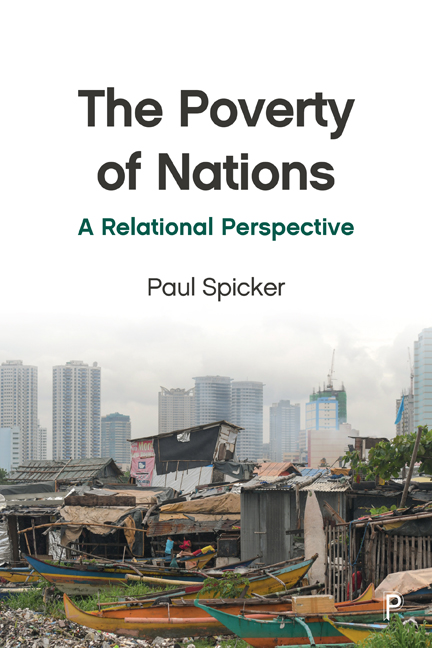Introduction: Representations of Poverty
Published online by Cambridge University Press: 18 March 2021
Summary
This book is about poverty. It is distinctive in two ways: in the case it makes for a relational view of poverty, and in its attempt to draw out common themes relating to developed and developing countries.
Poverty is represented in many different ways. Here are some examples from around the world.
‘Many of the world's poorest people are women who must, as the primary family caretakers and producers of food, shoulder the burden of tilling land, grinding grain, carrying water and cooking. This is no easy burden. In Kenya, women can burn up to 85 percent of their daily calorie intake just fetching water.’
‘Poverty is a persistent problem for over 20% of the children in the United States. Child development is shaped by children's interactions within and across social contexts. The social contexts in which children from impoverished backgrounds live can be devastatingly harmful: growing up in poverty exposes children to more stress or abuse in the home, neighborhood crime, and school violence. Exposure to environmental conditions associated with poverty profoundly shapes their development, and the effects become more pronounced the longer the exposure to poverty. Empirical studies from multiple social science disciplines … have consistently documented crippling disadvantages across a number of developmental domains, showing that the disadvantages associated with poverty are entrenched, wide-reaching, and constitute an immediate and pressing policy challenge.’
‘In our world, one in eight people live in slums. In total, around a billion people live in slum conditions today. …
The impact of living in these areas is life threatening. Slums are marginalised, large agglomerations of dilapidated housing often located in the most hazardous urban land – e.g. riverbanks; sandy and degraded soils, near industries and dump sites, in swamps, flood-prone zones and steep slopes – disengaged from broader urban systems and from the formal supply of basic infrastructure and services, including public space and green areas. Slum dwellers experience constant discrimination and disadvantage, lack of recognition by governance frameworks, limited access to land and property, tenure insecurity and the threat of eviction, precarious livelihoods, high exposure to disease and violence and, due to slums’ location, high vulnerability to the adverse impacts of climate change and natural disasters.’
- Type
- Chapter
- Information
- The Poverty of NationsA Relational Perspective, pp. 1 - 12Publisher: Bristol University PressPrint publication year: 2020



